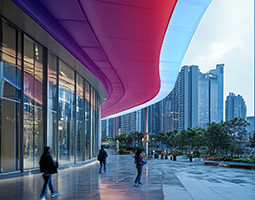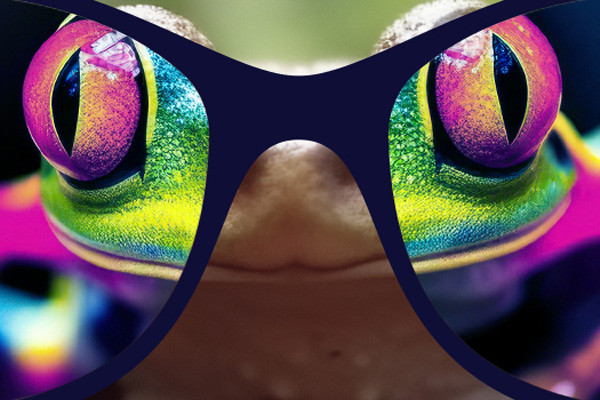In over two decades of designing and building digital products, I've seen a significant shift in our approach to accessibility and inclusivity.
What was once considered a box to tick with basic accommodations, like larger text or high-contrast modes, has evolved into a deeper understanding of what it means to create truly inclusive experiences that cater to the diverse needs, abilities and preferences of all of us.
One of the most exciting developments in this space is the infusion of gen AI to create a step change in inclusive design thinking. With the help of AI-powered tools, we can create digital experiences that are personalised, adaptive and empowering while solving real-world problems for more diverse groups. This is a key insight from our Human Experience Report, which explores the intersection of AI, identity and authentic inclusivity in depth.
As we embrace AI-powered inclusive design, we must also confront the reality of the digital divide. Access to AI and advanced digital tools is not equally distributed, which risks exacerbating social inequalities. Our challenge is to push the boundaries of inclusive design while also democratising access to these technologies.
However, designing more deeply for diversity and inclusion isn't just about adopting the latest AI tech. It's also about approaching the design process with empathy, curiosity, and an understanding of the diverse needs and perspectives of our users.
This means:
- Involving diverse groups as co-creators, actively seeking their insights and feedback throughout the design process
- Continuously educating ourselves on inclusive design practices, like the principles outlined in Microsoft's Inclusive Design Toolkit
- Challenging our own biases and assumptions, and striving to create teams that are themselves diverse and inclusive
- Measuring success based on real, human impact rather than just engagement metrics, and iterating based on user feedback and outcomes
AI is not just a tool for creating inclusive products; it's also creating new trends in the design process itself. AI can play a crucial role in enhancing our inclusive design skills, complementing human creativity and insight. By expanding our worldview through aggregating and presenting diverse perspectives from global sources, AI helps designers consider viewpoints they might not have encountered otherwise. These tools can aid in the critical process of challenging our ingrained biases by offering fresh, data-driven insights that may contradict our assumptions. AI deepens our empathy by simulating diverse human experiences, allowing designers to better understand and design for a wide range of abilities and contexts. By incorporating AI in this way, we can create a more rigorous, empathetic, and truly inclusive design process.
At the same time, we must also navigate the complex ethical and privacy considerations that come with designing for diversity. Achieving a deep understanding of users' contexts and preferences often requires collecting and processing sensitive personal data. We have a responsibility to address these privacy concerns head-on, ensuring that we are transparent about our data practices and that we have robust security measures in place to protect user information. As we begin to leverage AI for inclusive design, we must also be mindful of potential biases in AI models themselves. Ensuring diverse and representative data sets in model training is crucial to avoid perpetuating or exacerbating existing biases.
"With the help of AI-powered tools, we can create digital experiences that are personalised, adaptive and empowering while solving real-world problems for more diverse groups."
But if we can get it right, the potential benefits are enormous. Designing for diversity and inclusion enables us to create digital experiences that truly serve everyone, not just a slice of the population. We can create a world where technology is a force for empowerment and connection, bringing people together across boundaries of age, language, ability, and background.
The business case is equally compelling. In Australia alone, the Centre for Inclusive Design estimates that over five million people with disabilities and older adults have more than $40 billion in annual disposable income. Globally, the Return on Disability Group found that the disposable income of people with disabilities worldwide is $1.9 trillion, equivalent to the world's eighth largest economy. However, many businesses are failing to tap into this market effectively. WebAIM's analysis of the top million homepages in February 2023 found that 96.3% had detectable Web Content Accessibility Guidelines (WCAG 2) failures, indicating a significant opportunity for improvement in web accessibility. By not designing with this significant market segment in mind, businesses are missing out on substantial opportunities to expand their customer base and drive growth.
This opportunity, in part, is encouraging innovation at the intersection of AI and inclusive design, opening exciting possibilities for creating truly adaptive and empowering digital experiences, including:
Responding to diverse needs: Emerging interfaces are increasingly adapting dynamically to human needs, abilities, and environments. By working with AI to interpret current contexts, such as emotional state, cognitive load, or physical surroundings, these interfaces can adapt in real-time. This approach is transforming user experiences in profound ways. Microsoft's Seeing AI app, for example, uses computer vision to describe the world for the visually impaired, reading text, identifying products, and describing scenes. Similarly, AI-powered interfaces can dynamically reduce visual clutter and enhance auditory cues to support users with cognitive disabilities.
Advances in conversational AI enhance inclusivity by breaking down barriers for those with limited literacy or motor skills. Understanding context, dialects, and emotional nuances, these technologies enable more natural and inclusive interactions. Emotion AI elevates this by detecting frustration or confusion and adapting the interface accordingly, ensuring a positive user experience through tailored responses.
Engaging more senses: Combining various input methods, such as gestures, voice, and touch, allows interfaces to seamlessly adapt to each person’s abilities. Enhancing these interactions with multi-sensory responses like haptic feedback, auditory signals, and visual cues creates a richer, more immersive experience. Intelligent management of these responses emphasises the most appropriate type of feedback based on a user’s specific context and needs. This versatility ensures that digital experiences are accessible and engaging for everyone, regardless of their individual abilities or preferences.
Elevating independence and quality of life: Recent advancements in Agentic AI (autonomous systems capable of handling complex, multi-step tasks) are transforming everyday support for a wide range of people, including those with executive function disorders. These AI agents use advanced algorithms to learn and predict needs, engaging in dynamic, self-reflective processes to provide more sophisticated interactions. By planning, executing, and managing daily activities, they support independence and improve quality of life for humans (and even other agents) with diverse needs. As this technology progresses, AI is moving beyond simple assistance to providing proactive, personalised support that takes care of actions and tasks deeply tailored to individuals.
Supercharging responsive environments: Smart environments, enhanced by ambient intelligence, are transforming accessibility and inclusivity in public spaces. Leveraging AI and IoT, these environments can detect and respond to individual needs in real-time. More sensors and connected devices in public infrastructure will enable personalised interactions through audio beacons for navigation, touchless kiosks for voice commands and gestures, and advanced AR overlays on smartphones for visual assistance. This adaptability ensures spaces are responsive and accessible for everyone.
Now with edge AI, we can also ensure privacy and real-time responsiveness by processing data locally. Platforms like Neuro® Edge, Cognizant's edge AI offering, enables secure, responsive, and personalised experiences without compromising personal data.
Designing alongside these tech advancements creates significant potential for a more digitally inclusive world. At Cognizant, we're committed to turning this opportunity into reality. Diversity and inclusion are central to who we are and how we innovate. We believe that by embracing the unique perspectives and experiences of our own people and those we’re designing for, we can create digital solutions that are technically impressive and deeply human. This ethos informs every aspect of our work, from the multidisciplinary teams we assemble to the research we conduct and the design decisions we make.
As we look to the future of inclusive design, it's clear that AI will be a critical tool in our kit. But it's equally clear that technology alone is not enough.
As we embrace these rapid changes, I'm optimistic about the potential for AI and inclusive design to create a more equitable and empowering digital ecosystem. By deeply integrating these tools and principles, we can build products that meet the needs of diverse humans while celebrating and elevating their unique voices and experiences. And in doing so, we can create a future in which emerging tech isn’t just powering innovation but also an enabler for social good.

















